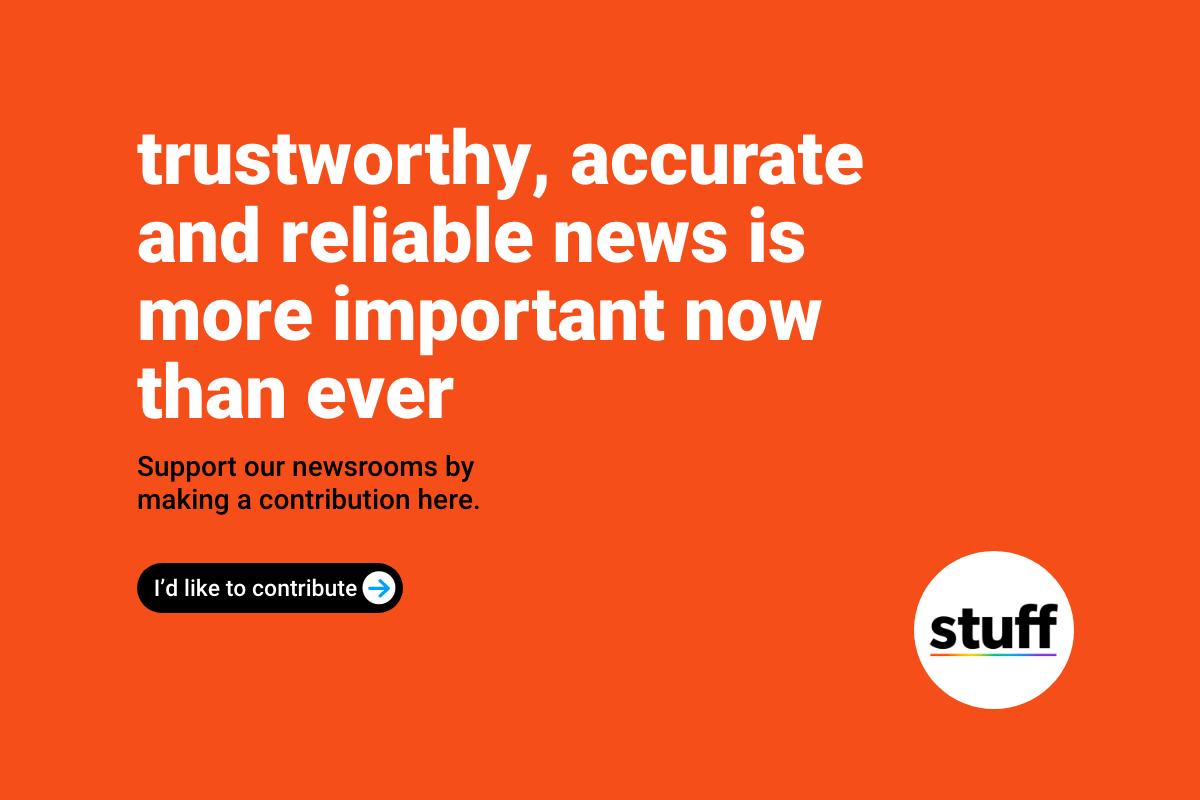
Know what’s happening
Access the private noticeboard for verified neighbours near you. Keep informed about any suspicious activity, send urgent updates to your neighbours when required and discuss emergency planning.
Get to know your neighbours
Browse the directory and start getting to know your neighbours. Don’t want to post to the whole neighbourhood? Send a private message.
Buy, sell and give away
Want to declutter your garage? Buy some used household items? Give away some garden stuff? Become a verified neighbour to browse and post items for sale. Trading is simple when everyone lives nearby.



Thank you for using Neighbourly
You may receive an email confirmation for any offer you selected. The associated companies will contact you directly to activate your requests.
The Team from Neighbourly.co.nz
To show our appreciation for those running small business in our communities, we are giving away our 3 month Premium Business Listings for FREE*.
Usually $150, your Premium Listing enables you to stay visible and connected to those around your business. Let your neighbours know how you're… View moreTo show our appreciation for those running small business in our communities, we are giving away our 3 month Premium Business Listings for FREE*.
Usually $150, your Premium Listing enables you to stay visible and connected to those around your business. Let your neighbours know how you're operating in Alert Level 3, share tips and tricks unique to your industry, send a few shoutouts - or share how your community can support you at this time.
There's no catches and no hidden fees. It's just our small way of saying thank you for playing such an essential part in our communities.
Grab a FREE 3 Month Premium Business Listing now. (Feel free to share the news with your fellow small business owners too!)
*limited time only
Get 3 Months Free

Dear Wellington - ANZAC Day will look a little different for us this year - however there are many ways for you to acknowledge the incredible men and women who have served our communities and given their lives for our country.
We invite you to share a memory or photo to commemorate this special… View moreDear Wellington - ANZAC Day will look a little different for us this year - however there are many ways for you to acknowledge the incredible men and women who have served our communities and given their lives for our country.
We invite you to share a memory or photo to commemorate this special day on Neighbourly below. It could be a story of a member in your family who served - or perhaps the way you and your family celebrate ANZAC Day each year. (It might even be a photo of your freshly baked can't be-beaten ANZAC cookies).
We also invite you to take part in Stand at Dawn and join us at 6:00 am on Saturday 25 April. Stand at your letterbox, at the front door, in your lounge rooms, balconies, in your driveway. Wherever you are in the world, stand with us and take a moment to remember our fallen – but please stay within your ‘bubble’.

23 replies (Members only)
Abhishek from Aotea
Kia Ora/Sat Sri Akal/Namaste/Salam/Shalom,
On 25th we commemorate ANZAC Day, a day when the combined forces of New Zealand and Australia (Australia New Zealand Army Corps) landed in Gallipoli and effectively entered the war. Amongst the ANZACs were Indian and Chinese soldiers of both New Zealand … View moreKia Ora/Sat Sri Akal/Namaste/Salam/Shalom,
On 25th we commemorate ANZAC Day, a day when the combined forces of New Zealand and Australia (Australia New Zealand Army Corps) landed in Gallipoli and effectively entered the war. Amongst the ANZACs were Indian and Chinese soldiers of both New Zealand and Australia. In addition to the ANZACs, British and French troops in Gallipoli there were also Indian troops from India in that theatre.
This Shradhanjali (Tribute) www.youtube.com... is a small effort by Ekta to honour and remember these men.
We salute these men.
ANZAC Day will be marked a little differently this year. We’ll be warm and cosy at home and The Last Post won’t start until you press play. But one thing will be the same – remembrance.
To help us remember those who served and understand what ‘to serve’ meant, … View moreANZAC Day will be marked a little differently this year. We’ll be warm and cosy at home and The Last Post won’t start until you press play. But one thing will be the same – remembrance.
To help us remember those who served and understand what ‘to serve’ meant, Ryman recorded their ANZAC resident’s stories. Some are humorous, others are tragic and eye-opening, but they all offer insight into the courage, bravery, and determination required to serve.
What better way to remember than to read the memories of those who were there?
Learn more

For over 150 years, the news and information we uncover and provide have relied on your support, either through subscription to our newspapers, consuming news via our online sites, or indirectly through the patronage you provide to those who advertise with us.
Now there’s a … View moreFor over 150 years, the news and information we uncover and provide have relied on your support, either through subscription to our newspapers, consuming news via our online sites, or indirectly through the patronage you provide to those who advertise with us.
Now there’s a new way you can support us: by making direct financial contributions to help power our news teams up and down the country.
Make a contribution and you’ll help our journalists continue to do what they do best: provide our readers with trustworthy, accurate and reliable news.
Contribute here

Rhondda Sweetman from Plimmerton Rotary
Tonight, Philip Mottram gave us the Viewpoint. He said ...
I believe education is at risk of becoming a commodity, something that can be bought and consumed. Educational institutions have become service providers. Their “success” is narrowly measured by crude instruments - assessments that … View moreTonight, Philip Mottram gave us the Viewpoint. He said ...
I believe education is at risk of becoming a commodity, something that can be bought and consumed. Educational institutions have become service providers. Their “success” is narrowly measured by crude instruments - assessments that are a snapshot of part of what students have learnt, not the whole picture.
Recently there have been opinion articles in Stuff where students bemoan that their “purchase” of a degree did not gain them a job ticket.
Parents bemoan their “investment” in private school fees not returning the yield they anticipated.
Taking a step back - Tomorrow’s Schools introduced the competitive model. Competition was supposed to improve the breed. A business model or Darwinian evolution, depending on your outlook. Winners and losers. League tables were drawn up and schools did everything in the rule book – and sometimes outside the rules to climb to the ladder.
As a result, schools have become heavily focussed on assessment, driven by test results, not the broader aims of the curriculum. Teachers are very adept at guiding students through assessments. Students are motivated by “gaining credits” not the learning that those credits are the measure of.
There is pressure from all corners on students and teachers to ensure students “pass”. Teachers retain control of the learning process to ensure they, the teachers don’t “fail” in their job. Students ask - exactly what answer should I give to ensure I get an excellence grade? Not - have I got a full understanding of the topic I’ve just been learning about?
This pressure to pass assessments has created a dependency on teaching, not independence of thought and learning on the part of the student. It’s about narrow, specific details, not broad understanding.
Courses are designed based on the assessments at the end, not the content that is being taught. The tail is wagging the dog.
This approach has done our students a great disservice. We have a cohort of students that have become very skilled at passing tests, but not necessarily capable of demonstrating and applying the knowledge and skills they have acquired outside the classroom environment. Not capable or confident to search out new learning themselves.
A brief example:
Secondary schools were presented with a series of targets. One was 85% of all students achieving NCEA Level 2 (Sixth Form Certificate in old speak) by the age of 18.
The underlying aim was laudable – to have the vast majority of our school leavers job ready, but by focusing on the measure, and not the aim, we had students and teachers concentrating on gaining credits, any credits to achieve Level 2. Not the learning and experiences that would make them truly job-ready. Stuck on an assessment treadmill.
By fixating on numerical targets, we have become slaves to “metrics” not the master.
We have teachers playing it safe by teaching for assessment, and not having the confidence in their abilities to teach the curriculum effectively and have their students pass assessments because they have developed a broad and deep understanding of the subject.
We have students and their parents expecting teachers to do a lot of the leg work to ensure students pass assessments.
And this is partly because the motivation often used is the same as Pavlov used with his dogs. Do this because you’ll earn credits. Not do this because it is actually quite interesting and could be really useful later on.
So, if you haven’t guessed, my viewpoint is – we have debased the value of education by treating it as a commodity.
It is not a service that can be bought. It is more than that. It is both a right to receive and a privilege to participate in.
It is a journey that prepares the student to be a contributing, fully functional member of society. To become a confident, connected, actively involved lifelong learner. And those are words from the New Zealand Curriculum, not some assessment standard.
The real “prize” at the end of any stage in education is the learning that has occurred. It is the journey that is important, not the destination. The certificate you receive is just a stamp in your passport marking a waypoint. And you just can’t buy that stamp, you’ve got to tread the path first.

Rhondda Sweetman from Plimmerton Rotary
Mayor Anita Baker. Anita was elected last October after nine years on the Council, with a business-friendly, city growth agenda, but needless to say the pandemic and lockdown have derailed things for the moment.
Virtual meetings have taken the place of regular ones. Anita is attending up to five… View moreMayor Anita Baker. Anita was elected last October after nine years on the Council, with a business-friendly, city growth agenda, but needless to say the pandemic and lockdown have derailed things for the moment.
Virtual meetings have taken the place of regular ones. Anita is attending up to five each day with various groups inside and outside the city. She has a key role in chairing the Wellington Mayors Emergency Management Group, normally a low-key job but now thrust into prominence. Porirua’s own emergency management office has sprung into action, working two shifts and dealing with all manner of issues, including food for the needy.
Looking to the future, the Mayor noted that Porirua had recorded the highest growth in the Wellington region in recent years but this had strained housing supply and infrastructure.
The City’s ability to withstand shocks is not strong, and risks needed to be carefully managed. In the present circumstances, the proposed rates increase of 4.9% would need to be reduced, so all expenditure was under review.
Three ‘shovel ready’ projects have been put to the Government for funding. Ministers have indicated they are sympathetic to projects which have a regional basis, so city amalgamation is back on the agenda, although Anita noted that some local mayors would fight it, as before.
She referred to the run-down look of the city centre, which needs revitalisation with decent restaurants and fewer empty shops. However, there are opportunities for new development where land and buildings are available, giving good reason for optimism.

Anzac Day is being celebrated differently this year, with virtual services and online events, all from our own living rooms, balconies and driveways. Download this pdf of a poppy, by award-winning illustrator Sharon Murdoch, to print off and stick in a front window - To show that even in lockdown, … View moreAnzac Day is being celebrated differently this year, with virtual services and online events, all from our own living rooms, balconies and driveways. Download this pdf of a poppy, by award-winning illustrator Sharon Murdoch, to print off and stick in a front window - To show that even in lockdown, in our small bubbles, we shall not forget. That we can still say thank you for the sacrifices, we can still pay tribute to the bravery of so many.

Colleen Hawkes Reporter from Homed
As a first-home buyer it pays to weigh up your options to see whether buying new or buying 'character' is best for you.

49 replies (Members only)
Fire Safety from Fire Safety - Wellington Region
With the evenings getting cooler, we have had a number of enquiries regarding chimney cleaning during the Level 4 Covid 19 Lockdown. Fire and Emergency NZ has received an update regarding chimney sweepers being essential service for health and safety reasons.
Tradespeople:
Tradespeople can do … View moreWith the evenings getting cooler, we have had a number of enquiries regarding chimney cleaning during the Level 4 Covid 19 Lockdown. Fire and Emergency NZ has received an update regarding chimney sweepers being essential service for health and safety reasons.
Tradespeople:
Tradespeople can do maintenance if it is to maintain the necessities of life or critical to safety. This includes electricians, plumbers and builders.
If you have safety concerns about your fire place or chimney, contact your local chimney sweep or plumber and have a discussion with them on the way forward. They may have questions such as have you got any other form of heating? What are the symptoms/how urgent is the job?
If you have the tools and experience and are going to clean out your chimney yourself, be safe. We dont want to have to turn up to load you into an ambulance or lower you off the roof!
We’ve been privileged to help Kiwis get the essentials needed to work, study, and stay connected. It’s led to huge demand and some orders are taking longer to deliver. We’d really like to apologise to the customers who’ve experienced these delays.
To help get it sorted faster we’ve … View moreWe’ve been privileged to help Kiwis get the essentials needed to work, study, and stay connected. It’s led to huge demand and some orders are taking longer to deliver. We’d really like to apologise to the customers who’ve experienced these delays.
To help get it sorted faster we’ve quadrupled our Customer Care team, and expanded our order fulfilment network so we can get thousands more orders delivered each day. Plus our remote Tech Solutions service will be free until May 11 to lend customers a hand with technology advice or setting up.
Thanks for your patience, everyone. We’re getting there.
Find out more

Kelly Dennett Reporter from Sunday Star Times
The Sunday Star-Times is looking to speak to a patient who has recently had some experience of the health system - either receiving treatment in a hospital or clinic or at an ED - and would be willing to talk about their experience, and how it could have been made better, either by shorter wait … View moreThe Sunday Star-Times is looking to speak to a patient who has recently had some experience of the health system - either receiving treatment in a hospital or clinic or at an ED - and would be willing to talk about their experience, and how it could have been made better, either by shorter wait times, better communication or level of care. We'd need you to be happy to be identified and photographed (from a distance). If you think you can help, please email senior journalist Andrea Vance on andrea.vance@stuff.co.nz.
 Loading…
Loading…
Are you sure? Deleting this message permanently removes it from the Neighbourly website.
 Loading…
Loading…
© Neighbourly 2025
